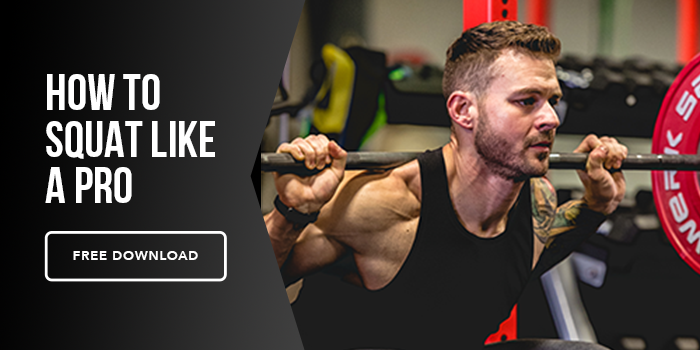Most people think the only time you burn calories is when you’re actively working out. But what if I told you that you could be torching calories long after you’ve left the gym —while watching Netflix, sitting in traffic, or trying to make sense of Kanye’s rants on social media.
Enter EPOC (Excess Post-Exercise Oxygen Consumption)—also known as the afterburn effect. It’s one of the biggest reasons weightlifting is superior to cardio for long-term fat loss. And, between you and me, it’s the reason I can afford to write these blogs while eating a microwaved, gas station burrito.
What Is EPOC and Why Does It Matter?
EPOC refers to the increased calorie burn that happens after intense exercise as your body works to restore itself to baseline. Think of it like this:
- During an intense lifting session, your body is pushed out of homeostasis.
- Muscle fibers experience stress, muscle glycogen gets depleted, and countless other cellular and systemic reactions take place.
- Once you stop training, your body has to work overtime to repair and recover—which requires extra energy (aka more calories burned).
This means you continue burning calories for hours—sometimes up to 48 hours—after your workout is over.
Why Strength Training Maximizes EPOC (More Than Cardio)
While all forms of exercise create some level of EPOC, weight training triggers a significantly higher afterburn effect than steady-state cardio. Here’s why:
-
Muscle Damage & Repair: Strength training creates microscopic muscle tears that need to be repaired—this repair process demands energy.
-
Higher Intensity = Higher Oxygen Debt: Heavy lifting and high-intensity strength training create a greater oxygen deficit, leading to prolonged post-exercise calorie burn.
-
Increased Metabolic Demand: Unlike cardio, which primarily burns calories during exercise, lifting builds muscle, which increases your Resting Metabolic Rate (RMR), so you burn more calories all the time.
How Much More Does EPOC Burn?
While the exact number depends on factors like intensity, training volume, and individual metabolism, research shows that:
-
Weight training can increase post-workout calorie burn by 6-15% of total workout calories for up to 48 hours.
-
Higher-intensity resistance training creates a bigger afterburn than steady-state cardio.
-
A study published in the European Journal of Applied Physiology found that heavy resistance training led to significantly greater EPOC compared to moderate-intensity cardio.
Translation? A hard lifting session doesn’t just burn calories while you’re training—it keeps your metabolism elevated long after you leave the gym.
EPOC vs. Cardio: The Real Difference
Cardio burns calories during exercise—but once you stop, that’s it. No extended calorie burn, no metabolic boost. Lifting, on the other hand, provides both immediate and long-term metabolic benefits.
Example:
-
60-minute jog = ~500 calories burned (but almost no afterburn effect).
-
60-minute heavy lifting session = ~400 calories burned (but with higher EPOC, you burn extra calories for up to two days afterward).
So, while cardio might “win” in the moment, lifting has a greater overall impact on fat loss.
How to Train for Maximum Afterburn
Want to maximize EPOC and keep your metabolism elevated post-workout? Here’s how:
1. Prioritize Compound Movements
Squats, deadlifts, bench presses, and rows engage multiple muscle groups, leading to greater oxygen demand and a bigger EPOC effect.
2. Lift Heavy (With Proper Form)
Training at 80-90% of your 1RM generates a greater post-exercise calorie burn than lifting lighter weights.
3. Use High-Intensity Strength Circuits
Combining strength training with minimal rest (e.g., supersets, circuit training) keeps heart rate elevated and enhances afterburn.
4. Incorporate Explosive Movements
Exercises like kettlebell swings, sled pushes, and Olympic lifts increase metabolic demand and oxygen consumption.
5. Keep Rest Periods Short (30-60 Seconds)
Less rest between sets = more sustained intensity = more EPOC.
An important consideration:
Our weight training efforts shouldn’t only be tailored toward increasing EPOC. We should focus on progressive overload, proper form, and creating mechanical tension. However, programming our training to burn more calories can make a lot of sense as a 3–4-week phase. We would call this a metabolic phase, where the stimulus is specifically designed to improve metabolic health. But as our body adapts to that training over time, it’ll be harder and harder to get a good return on our investment. At this point, you can switch to a neurological (strength) or hypertrophy (muscle building) phase.
The Bottom Line
If you want to burn more calories at rest, boost your metabolism, and make fat loss easier, strength training is your best bet.
✔ Weight training creates a prolonged afterburn effect (EPOC) that keeps calorie burn elevated for up to 48 hours.
✔ Lifting builds muscle, which increases resting metabolism, meaning you burn more calories all day, every day.
✔ Higher intensity = higher oxygen debt = greater fat-burning potential.
✔ Unlike cardio, weight training provides both immediate and long-term metabolic benefits.
Cardio is fine, but if fat loss is the goal, strength training should be your priority. Train smart, lift heavy, and let EPOC do the work while you rest.






